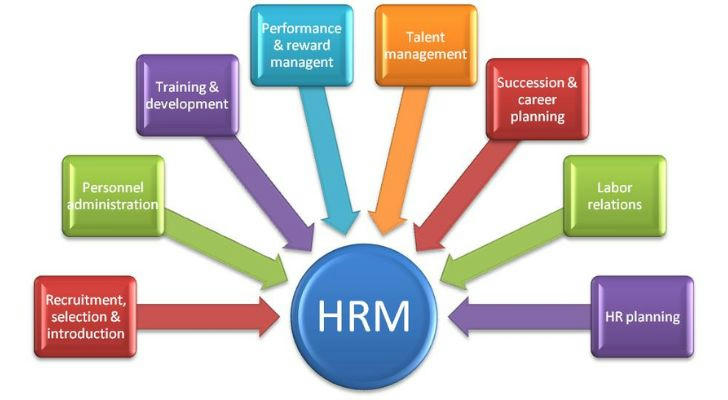Human Resource Management Skills Training: Enhancing Recruitment and Selection Efficiency
Recruiting and selecting the right talent is one of the most critical functions of human resource management. However, with the rise of competition and technological advancements, traditional hiring methods are no longer enough. To stay ahead, HR professionals need to develop skills that can streamline the recruitment and selection process, ensuring efficiency and effectiveness.

The Challenges in Recruitment and Selection
Recruitment and selection come with their unique set of challenges. A study by LinkedIn found that 67% of HR professionals believe that talent shortages are a major obstacle to hiring the right candidates. The increasing demand for top talent, combined with the complexities of modern recruitment tools, can overwhelm even the most seasoned HR professionals.
Some common pain points in recruitment include:
• Time-consuming processes: Traditional hiring methods often involve lengthy interview rounds, manual screening of resumes, and inefficient candidate evaluations.
• Bias in decision-making: Human biases can influence hiring decisions, leading to less diverse teams and potentially overlooking qualified candidates.
• High turnover rates: Hiring the wrong candidate can result in high turnover, which is costly for organizations in terms of both time and resources.
Key HR Skills for Improving Recruitment Efficiency
To tackle these challenges, HR professionals need to develop and refine several key skills. These skills, when properly trained, can drastically reduce the time it takes to fill a position, improve candidate selection accuracy, and reduce the likelihood of hiring mistakes.
1. Data-Driven Decision Making
In today’s digital age, relying on data to make decisions is a game-changer. By incorporating data analytics into recruitment processes, HR professionals can more accurately assess candidates and predict job success. According to a Harvard Business Review study, data-driven recruitment can improve hiring quality by up to 30%.
Training focus:
• Learning how to utilize applicant tracking systems (ATS) and data analytics tools for evaluating resumes and application forms.
• Analyzing metrics like time-to-hire, cost-per-hire, and quality-of-hire to optimize the recruitment process.
By leveraging data, HR teams can identify patterns in successful hires, streamline candidate screening, and ultimately make more informed hiring decisions.

2. Bias Reduction Techniques
Bias in recruitment is a widespread issue that can lead to the exclusion of talented individuals based on unconscious factors like gender, age, or ethnicity. In fact, a report from McKinsey revealed that companies with diverse workforces are 33% more likely to outperform their competitors in profitability.
Training focus:
• Providing HR professionals with tools to identify and mitigate biases during resume screenings and interviews.
• Incorporating structured interview techniques that focus solely on job-related criteria, rather than subjective impressions.
• Training hiring managers to recognize their own biases and ensure a fair and inclusive selection process.
Implementing these strategies can help reduce biases, leading to more diverse and effective hiring outcomes.
3. Effective Interviewing Skills
The interview process is the cornerstone of selection. Yet, many organizations still rely on unstructured interviews, which can be subjective and unreliable. According to a study by The National Bureau of Economic Research, unstructured interviews are only 50% effective in predicting a candidate’s job performance, compared to structured interviews that are 62% more reliable.
Training focus: • Conducting structured interviews with a standardized set of questions that focus on key competencies relevant to the role.
• Using behavioral interview techniques to assess how candidates have responded to situations in the past.
• Training interviewers to probe deeper and ask follow-up questions to get more detailed responses.
By honing interviewing skills and shifting to structured formats, HR professionals can significantly improve the accuracy and effectiveness of candidate evaluations.
Leveraging Technology in Recruitment
Technology plays a crucial role in modern recruitment and selection. From applicant tracking systems (ATS) to video interviews and artificial intelligence (AI)-driven tools, HR professionals have access to a wide range of resources that can increase efficiency.
• Applicant Tracking Systems (ATS): ATS help HR professionals filter and sort resumes more efficiently, saving time and ensuring that only qualified candidates are reviewed.
• AI-powered Screening: AI tools can analyze resumes and applications, ranking candidates based on how well they match job descriptions. This can speed up the initial screening process and ensure that no potential candidates are overlooked.
• Video Interviews: Video interviewing platforms allow for remote interviews, reducing the need for in-person meetings and saving valuable time.
Training focus:
• Getting familiar with the latest recruitment technologies and understanding how they can improve the overall process.
• Learning how to use AI-based tools to enhance candidate screening, reducing human error and bias.
• Training HR professionals to effectively integrate these technologies into their recruitment strategies.
By embracing these technologies, HR professionals can improve the speed and accuracy of recruitment while providing a better candidate experience.
Measuring Recruitment Success

One of the most important aspects of improving recruitment efficiency is the ability to measure the success of the process. By tracking key performance indicators (KPIs), HR professionals can assess where the process can be improved.
Common KPIs for recruitment include:
• Time-to-hire: The average time it takes to fill a position.
• Cost-per-hire: The total cost associated with hiring a new employee, including advertising, recruiter fees, and interview costs.
• Quality-of-hire: The performance and retention of hired candidates over time.
Training focus:
• Learning how to track and analyze recruitment KPIs. • Adjusting recruitment strategies based on performance data to improve future hiring outcomes.
Conclusion
Recruitment and selection can be a complex and time-consuming process, but with the right skills and training, HR professionals can greatly enhance their efficiency. By focusing on data-driven decision-making, bias reduction, structured interviewing, and leveraging technology, HR teams can streamline the hiring process, reduce turnover, and ultimately select the best candidates for each role.
With continuous training and upskilling, HR professionals can stay ahead of the curve and navigate the ever-evolving recruitment landscape, ensuring that they meet the needs of their organization and its talent pool.
